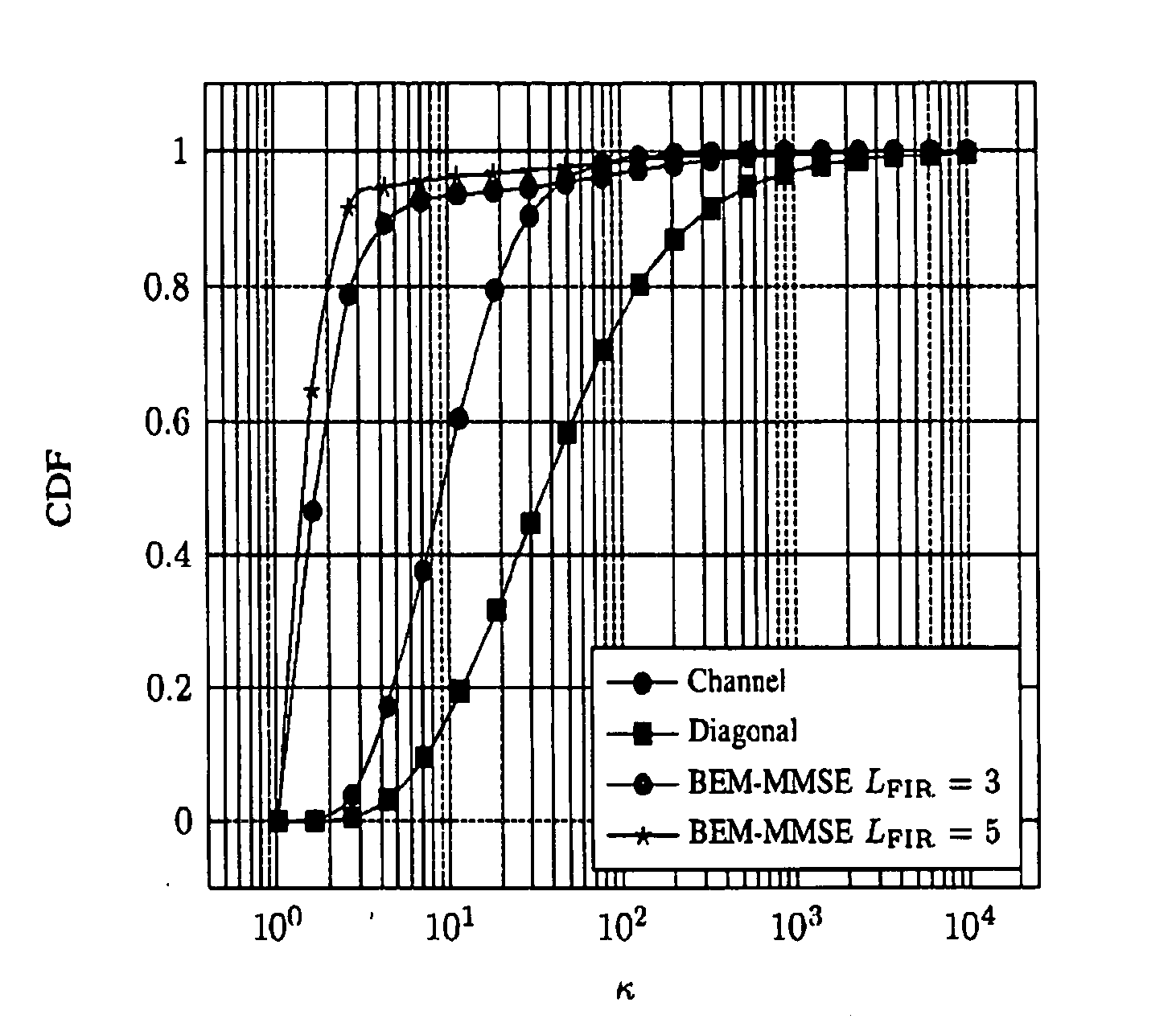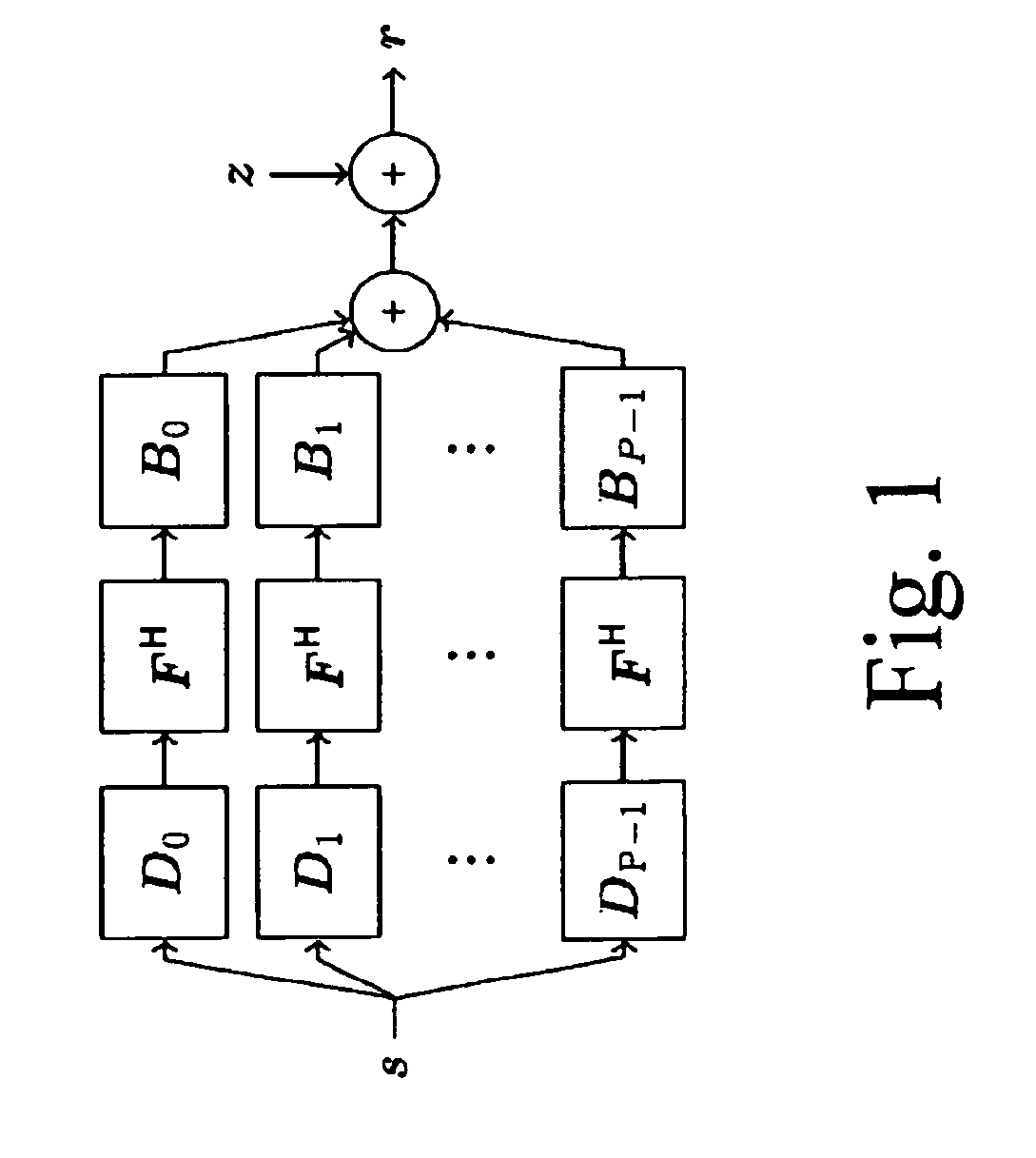Process for Suppressing Intercarrier Interference in a OFDM Receiver
a technology of intercarrier interference and communication system, which is applied in the direction of modulated carrier system, amplitude-modulated carrier system, transmission, etc., can solve the problem that the complexity of achieving such an inversion cannot be supported by a practical mobile receiver, and the performance of the ofdm system is significantly impaired, etc. problem, to achieve the effect of reducing complexity and tim
- Summary
- Abstract
- Description
- Claims
- Application Information
AI Technical Summary
Benefits of technology
Problems solved by technology
Method used
Image
Examples
Embodiment Construction
[0059]Preliminary to the description of one particular practical embodiment of a preconditioning process, some more theoretical considerations need to be discussed in the following.
I. Theoretical Considerations
[0060]One considers the transmission over a time-varying, frequency-selective fading channel with continuous-time impulse response
h(t,τ)=Σmαm(t)ψ(τ−τm)
assumed to obey the wide sense stationary uncorrelated scattering (WSSUS) model [2], where ψ(τ) represents the equivalent transmit-receiver front-end low-pass filter, τm represents the p-th path delay, αm(t) is the time-varying complex channel coefficient associated with the m-th path of the propagation channel respectively. One shall refer to h[κ,l]| as the corresponding low-pass sampled discrete-time impulse response, and assume h[κ,l] to be well-approximated by a finite-impulse response model with a maximum delay spread of L samples. Then one assumes a classical OFDM system with cyclic-prefix of d...
PUM
 Login to View More
Login to View More Abstract
Description
Claims
Application Information
 Login to View More
Login to View More - R&D
- Intellectual Property
- Life Sciences
- Materials
- Tech Scout
- Unparalleled Data Quality
- Higher Quality Content
- 60% Fewer Hallucinations
Browse by: Latest US Patents, China's latest patents, Technical Efficacy Thesaurus, Application Domain, Technology Topic, Popular Technical Reports.
© 2025 PatSnap. All rights reserved.Legal|Privacy policy|Modern Slavery Act Transparency Statement|Sitemap|About US| Contact US: help@patsnap.com



